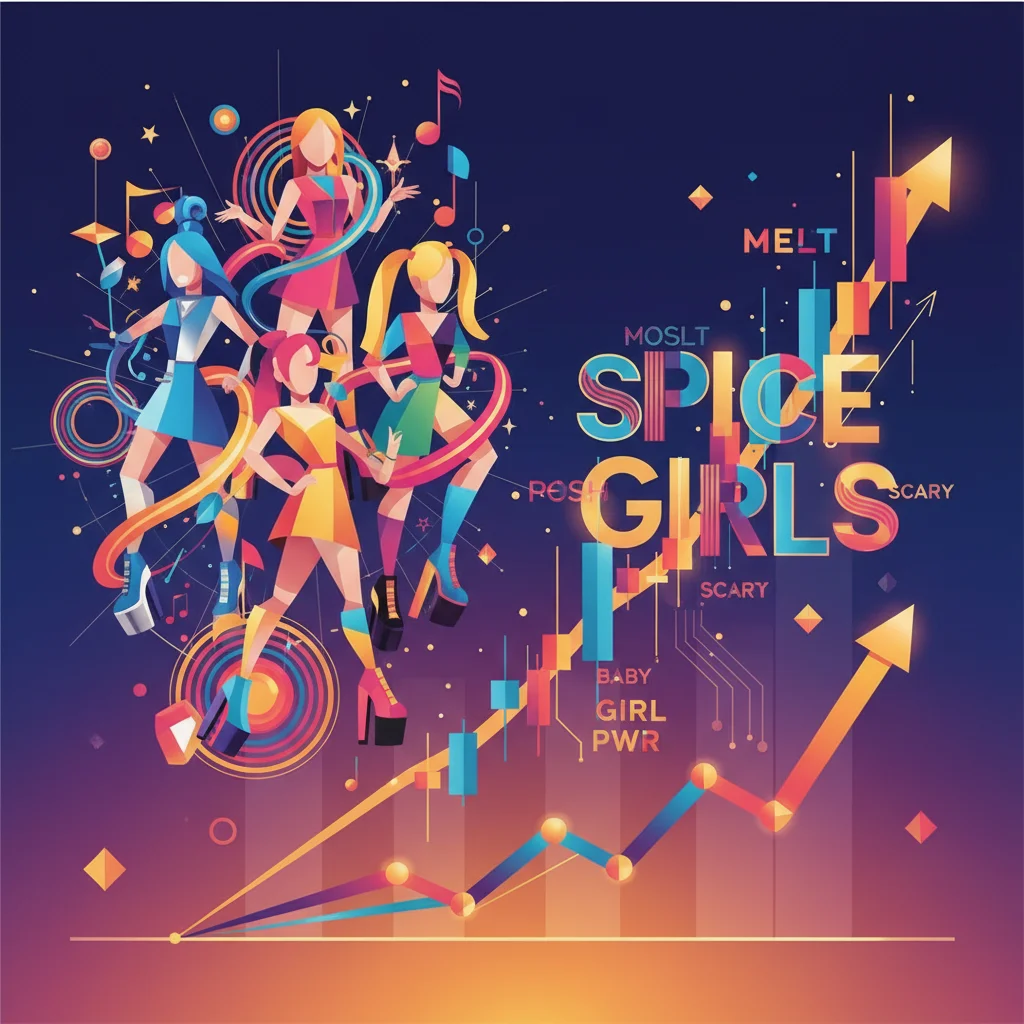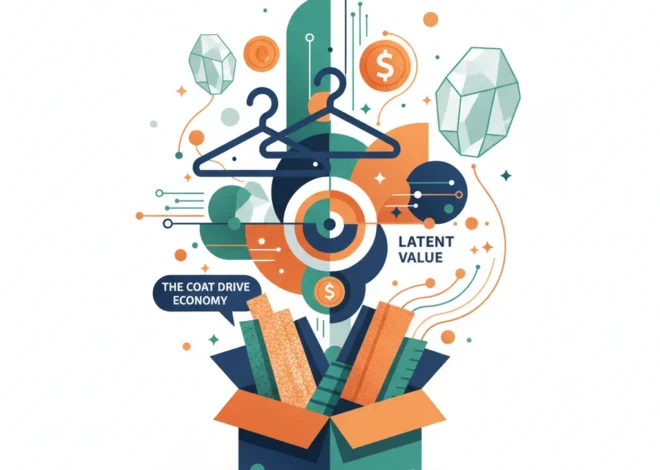
Spice Girls & Stock Tickers: Unpacking the Investment Economics of the Girl Group Phenomenon
In the mid-1990s, a new type of asset class exploded onto the global stage. It wasn’t a tech stock or a commodities future; it was a carefully engineered, high-yield cultural product packaged in platform sneakers and a powerful marketing message: “Girl Power.” The Spice Girls, and the wave of girl groups that followed, weren’t just pop stars; they were billion-dollar startups, and their story offers a fascinating case study in venture capital, brand equity, market disruption, and the evolution of asset valuation.
The recent BBC docu-series, Girlbands Forever, takes a nostalgic look at this era, highlighting the pioneering women who defined a generation. But beneath the bubblegum pop and iconic fashion lies a story of ruthless industry mechanics and a business model ripe for disruption. For investors, finance professionals, and business leaders, the trajectory of the girl group—from label-controlled commodity to decentralized, creator-driven enterprise—provides a powerful lesson in the ever-shifting landscape of the global economy.
The 90s Record Label: The Original Venture Capitalist
Before the age of viral TikTok trends and direct-to-fan platforms, the music industry operated on a model strikingly similar to venture capital. Major record labels like Virgin, Sony, and Universal were the VCs, and aspiring artists were the startups seeking seed funding. The process was a high-risk, high-reward portfolio strategy.
Labels would invest significant capital into scouting, developing, and marketing a new group. This “A&R” (Artists and Repertoire) process was the due diligence phase. They sought a unique selling proposition (USP)—a “Posh,” “Scary,” “Sporty,” “Baby,” and “Ginger,” for instance—that could be packaged and sold to a target demographic. The initial investment covered everything from vocal coaching and choreography to studio time and multi-million dollar music video productions. The goal was to achieve massive scale and a blockbuster exit, not through an IPO, but through platinum album sales and sold-out stadium tours.
However, as the BBC series highlights, this model was often deeply inequitable. The “term sheet” for these artists came in the form of complex, multi-album contracts that favored the “investor” heavily. Artists often received a small percentage of royalties, and only after the label had recouped all its initial investment (and then some) through creative accounting. According to industry analysis, artists in that era might receive as little as 10-15% of the revenue from their own music. This structure ensured that even wildly successful groups—the “unicorns” of their day—saw only a fraction of the wealth they generated, while the label reaped the vast majority of the rewards.
The artists were the product, not the proprietors. They built immense brand value, but they held very little of the equity. This lack of ownership and control was the fundamental flaw in the system, a vulnerability that would eventually be exploited by technological disruption.
Beyond the Balance Sheet: What a Local Food Pantry Reveals About the Future of Finance and Investing
From Physical Albums to Digital Assets: A Paradigm Shift in Music Finance
The economics of the 90s girl group were built on a foundation of tangible goods: CDs, cassette tapes, merchandise. This created a centralized system controlled by manufacturing and distribution gatekeepers—the labels. The arrival of Napster at the turn of the millennium, followed by the rise of legal streaming services like Spotify and Apple Music, shattered this model. It was a complete market disruption, akin to how fintech platforms challenged traditional banking.
Initially seen as a crisis, this shift ultimately democratized the industry and paved the way for a new financial structure. Today’s artists, and the girl groups that have emerged in the K-Pop era like BLACKPINK, operate in a vastly different economic environment. Their value isn’t just in record sales; it’s in a diversified portfolio of revenue streams that they control to a much greater degree.
Below is a comparison of the business models, illustrating the shift from a centralized, label-owned model to a decentralized, artist-centric one.
| Revenue & Operations | “Golden Age” Girl Group (e.g., 1990s-2000s) | Modern Music Enterprise (e.g., 2020s) |
|---|---|---|
| Primary Revenue Source | Physical Album Sales (CDs, Tapes) | Streaming Royalties, Brand Partnerships, Direct-to-Fan Subscriptions |
| Intellectual Property (IP) Control | Largely owned by the record label | Often co-owned or fully retained by the artist; complex licensing deals |
| Marketing & Distribution | Controlled by label via radio, TV (MTV), print media | Direct-to-fan via social media (TikTok, Instagram), DSPs (Spotify, Apple Music) |
| Fan Relationship | Mediated through fan clubs and media appearances | Direct, personal engagement; community building via digital platforms |
| Access to Capital | Almost exclusively through advances from major labels | Label advances, venture capital, crowdfunding, royalty sales via fintech platforms |
| Financial Instrument | The Album (a single, high-stakes product launch) | The Brand (a diversified portfolio of content, products, and experiences) |
This table illustrates a fundamental change in the core business. The modern artist is a CEO managing a complex portfolio of assets, leveraging financial technology to optimize their earnings and connect directly with their market.
The New Frontier: Music Royalties as a Tradable Asset Class
The most profound evolution in the finance of music is the emergence of intellectual property as a legitimate, investable asset class for a wider range of investors. Once the exclusive domain of major publishing houses and private equity, music royalties are now being securitized and fractionalized, allowing individuals to engage in the trading of music assets much like they would on the stock market.
Companies like Hipgnosis Songs Fund have spent billions acquiring the catalogs of legendary artists, treating future royalty streams as a predictable, long-term annuity uncorrelated with the broader market. This has attracted immense institutional investing. On a more granular level, fintech platforms like Royalty Exchange and JKBX allow accredited and even retail investors to buy “shares” in specific songs or catalogs, receiving a portion of the future earnings.
This innovation provides a powerful new financing tool for artists. Instead of signing away their rights to a label for an advance, an artist can now sell a percentage of their future royalty stream directly to investors, raising capital while retaining creative control. It’s a form of non-dilutive funding for the artist’s business.
Furthermore, the advent of blockchain technology presents even more disruptive possibilities. Non-Fungible Tokens (NFTs) have already been used to sell unique digital versions of albums and to fractionalize royalty ownership, creating a transparent, peer-to-peer marketplace for music assets. According to a report from Goldman Sachs, global music revenues are projected to more than double to around $131 billion by 2030, driven largely by streaming. This growth makes the underlying assets—the song rights—increasingly valuable and attractive to a new class of tech-savvy investors.
Gove's High-Stakes Gamble: Can a 1.5 Million Home Target Reshape the UK Economy?
Lessons for the Modern Investor and Business Leader
The story of the girl group, from the Spice Girls to Little Mix, is more than just a nostalgic trip. It’s a microcosm of economic transformation that holds valuable lessons for anyone navigating today’s market.
- The Value of Equity: The primary struggle of early girl groups was their lack of ownership. In any venture, whether a tech startup or a creative project, retaining equity and control is paramount for long-term value creation.
- Adapt to Disruption: The record labels that thrived were those that adapted to the digital shift, not those who fought it. Businesses must constantly re-evaluate their models in the face of technological change or risk becoming obsolete.
- Diversification is Key: The modern artist’s success lies in a diversified portfolio of revenue streams. Similarly, businesses and investors should avoid over-reliance on a single product or market, spreading risk and creating multiple paths to profitability.
- Direct-to-Consumer is Power: Technology has removed the middleman in countless industries. Building a direct relationship with your customer or audience is the most valuable and defensible asset a modern business can have. As a16z has noted, the “Passion Economy” allows individuals to monetize their unique skills, creating new opportunities outside of traditional corporate structures.
Ultimately, the saga of the girl group is a powerful reminder that behind every cultural phenomenon is a business model. By analyzing the economics of their rise and the financial technology that reshaped their industry, we can gain invaluable insights into the timeless principles of investing, innovation, and the enduring power of a well-managed brand.
Beyond the Slice: What Pizza Hut's UK Closures Reveal About the Shifting Economic Landscape


